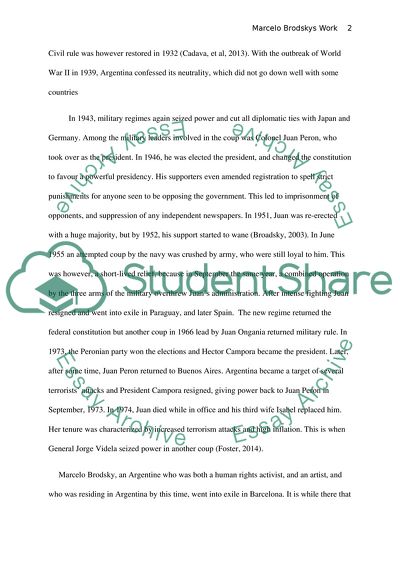Cite this document
(“Analyse Marcelo Brodskys Work Buena Memoria From the Perspective of Essay”, n.d.)
Analyse Marcelo Brodskys Work Buena Memoria From the Perspective of Essay. Retrieved from https://studentshare.org/visual-arts-film-studies/1682535-analyse-marcelo-brodskys-work-buena-memoria-from-the-perspective-of-memory-work
Analyse Marcelo Brodskys Work Buena Memoria From the Perspective of Essay. Retrieved from https://studentshare.org/visual-arts-film-studies/1682535-analyse-marcelo-brodskys-work-buena-memoria-from-the-perspective-of-memory-work
(Analyse Marcelo Brodskys Work Buena Memoria From the Perspective of Essay)
Analyse Marcelo Brodskys Work Buena Memoria From the Perspective of Essay. https://studentshare.org/visual-arts-film-studies/1682535-analyse-marcelo-brodskys-work-buena-memoria-from-the-perspective-of-memory-work.
Analyse Marcelo Brodskys Work Buena Memoria From the Perspective of Essay. https://studentshare.org/visual-arts-film-studies/1682535-analyse-marcelo-brodskys-work-buena-memoria-from-the-perspective-of-memory-work.
“Analyse Marcelo Brodskys Work Buena Memoria From the Perspective of Essay”, n.d. https://studentshare.org/visual-arts-film-studies/1682535-analyse-marcelo-brodskys-work-buena-memoria-from-the-perspective-of-memory-work.


